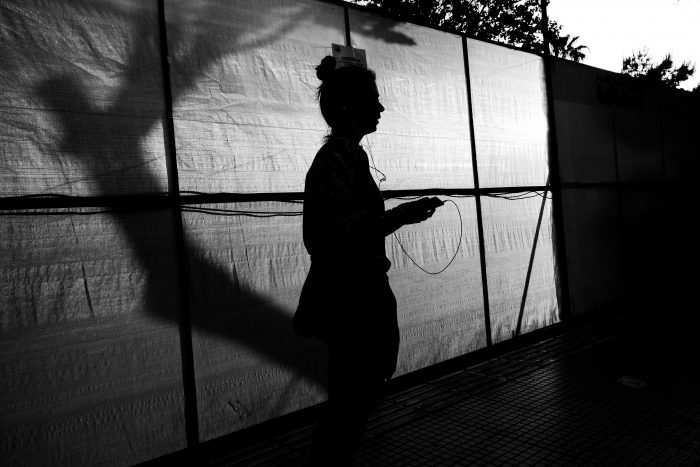As my teacher Todd Norian says: “If you want to know your shadows, get into a romantic relationship and try to stay in it.” We all long to connect closely and feel we belong, and for many of us, one way to fulfill this longing is through an intimate relationship. Yet, in my experience, a close and intimate connection to another being is also where our most vulnerable wounds emerge. Including our so-called shadows: the parts of ourselves we dislike and would rather do without.
When they come up to the surface, we have a choice: (1) either we numb out, distract (e.g. checking the latest status updates online) or attempt to convince ourselves out of owning our shadows (“They are wrong and the source of my problem”) or (2) we admit and integrate our shadows.
In my case, my intimate relationship has been the arena where most of my shadows get unveiled. Obviously, shadows might appear in other contexts or situations too. What a partner does, when you stick around long enough, is to reflect parts of you that you don’t like, even hate or never realized you had. The tricky thing is that shadows appear through what the other person does, thus making it seducing to blame or get mad at the other person and make it “theirs.” One example is that my significant other easily expresses anger by raising her voice and energy level. As I usually repress my anger and let it boil into resentment inside of me, I immediately judge her for expressing anger outwardly, which to me feels “wrong” and something from a bad person. After repeating that pattern for years I realized I have been unwilling to own that angry side of me that wants to express. I have been rejected this shadow for years.
When we start blaming the other and feel a strong sense of rejection towards them, this is typically a good indicator that we are refusing to own a part of ourselves. In such moment, what is always valuable to ask ourselves is: “What part of myself am I rejecting as I am blaming/judging the other person right now?”
What can be tricky is that what we disown disaccords with the image we have of ourselves, e.g. the “nice”, “honest” or “generous” person we are… Of course we want to live in integrity: respecting what is mostly important to us, our values and life goals. However, in my experience, when faced with something out of integrity we do not need to blame or judge, and there is less drama or intensity involved. We are capable to accept the other’s differences and hold them with compassion, while staying true to our integrity.

The dramatic and charged aspect of a trigger then represents a good opportunity to own a for-long repressed shadow. How do we do this? This is definitely a work-in-progress for me, but here are a few steps I find helpful:
- Watch your reactivity. When we are reactive or judgmental, this is usually a good sign that we have something to hide or defend – and thus something we do not own. Take a deep breath, feel your feet on the ground, and realize you are safe.
- Receive feedback – and a take a step back. This is one of the most difficult steps for me: listening to the feedback the other person is giving me. Unless you are talking to an enlightened person, this feedback will be mixed with their own disowned shadows and judgment, so it’s important to take a step back to discern the useful information for you.
- Take the space you need. If you, like me, are a pleaser who has a hard time setting clear boundaries with others and take space, this step won’t be easy either. Yet I found that, in challenging times, taking time for myself and withdraw from the interaction for a while is very helpful. First, it allows our system to calm down as we move away from the trigger and actual drama. Second, this is an act of self-care which will resource ourselves. Third, it gives us an opportunity to reflect and do something to integrate this shadow: for example journaling, making art, going for a walk on our own with nothing in our earphones, etc. Taking time for ourselves in that way requires discipline, because we will be tempted to talk to another person, distract ourselves with technologies, etc. Try to pay attention to yourself, and if you need to distract yourself, make the commitment to go back.
- Do not jump to conclusions. The worst thing you can do for yourself is to draw conclusions and take action (e.g. ending the relationship, etc.) from a reactive place. Clarity is only possible from a non-reactive, resourced, and grounded place, once the storm is completely gone.
- Practice Self-Compassion. Shame, guilt, regrets, self-disgust, self-irritation… some or all of these will appear as you start integrating your shadows. If you have access to a compassionate and gifted healer or therapist who can help integrate, reach out to them. Meanwhile, support yourself with self-compassion and self-acceptance practices. Right now Soundstrue is hosting a free self-acceptance summit with more than a dozen of well-known teachers. One of them, Chris Germer, shares some simple steps to practice self-compassion when something difficult to accept arises:
- Become aware. Name what is difficult and acknowledge it. Let your awareness rest onto the sensations that arise in your body, with mindfulness and openness.
- You are not alone. Give yourself some slap. You are not alone and many of us are struggling with similar issues. This is not to make it disappear or minimize the situation, but rather to realize that it is very human.
- Tell yourself what you would tell another person. If someone you love were you right now, how would you offer them support? What would you tell them? That might feel awkward at first, but try it. Again, this practice is not about feeling sorry for ourselves, but rather about receiving what we are so good at giving others.
- Be patient… and come back. One good news and one less good. The bad news is that integrating our shadows is a life-time process; if we think we can journal about it and never have to face it again, we might have to think twice. The good news is that every single (even baby) step helps. As you become clear about one shadow, it will be much easier to embrace it next time it shows up, and the following time… Journal about it, and get back to it in a couple of weeks.
- Shine your light. We all have shadows, and we also have bright sides! As you work with your shadows, make sure to journal and reflect about your “light” sides too: the unique gifts you have and that can enrich the world. You can ask your friends for inspiration, but name some of your bright sides yourself as well so that you are able to own your gifts without external help.

Owning your light will make it easier to integrate your shadows, as it will give you a sense of balance. To feel whole, we need all sides of ourselves – our light and our shadows. We cannot look directly at the sun, but we can watch the moon reflecting the sun’s light without burning our eyes. When owning our shadows, we are better able to own our light – and thereby shine it onto the world.
Be the light, spread the light.
Namaste
Cédric


